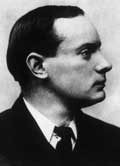Son of an English sculptor and his Irish wife; educated in a private school, at the Christian Brothers School in Westland Row; graduated as lawyer from the Royal University of Ireland; joined the Gaelic League in 1895; became the League's president and editor of its newspaper, "An Claidheamh Soluis" ("The Sword of Light"); in September 1908 founded a bilingual school in Ranelagh, near Dublin, to promote Irish language and culture; published a collection of Irish tales and his own poems; joined the Irish Volunteers (1913) and became a member of their provisional committee; was co-opted to the Volunteers' Supreme Council (July 1914); joined the Irish Republican Brotherhood (1915), which secretly controlled the Volunteers' central executive, and was one of the leaders of extreme Nationalist section of this organization; together with Tom Clarke and several other leaders of the Irish Republican Brotherhood planned the Easter Rising against British government; on Easter Monday (24 Apr 1916) the Military Council, set up by the rebels, elected Pearse president of the Provisional Government; on the same day he announced the establishment of the Irish Republic from the steps of Dublin General Post Office and the Rising began; after a week's fighting he and his supporters agreed to an unconditional surrender "to prevent further slaughter of Dublin citizens"; was court-martialled, condemned to death, and executed by a firing squad in Kilmainham Jail (3 May 1916). Biography source: [1][2] |

